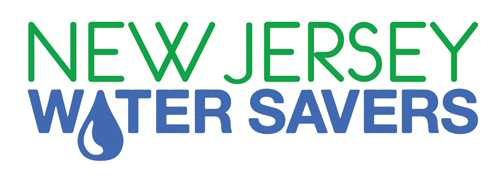NJ WATERSAVERS
![]()
Fertilizer application
Plants and lawns need essential nutrients; and while most are natural and come from the soil and others come from the rain. Nutrients can also be applied through the use of fertilizers. By applying the correct amount of fertilizer or by applying smaller amounts more often is not only a good horticultural practice, but it can also help preserve the environment. Interestingly enough, many lawns will not need to be fertilized if organic sources such as grass clippings are left in place. If the soil pH is incorrect then the plants cannot use the nutrients even if they are found in the soil.

Fertilizing a lawn ~ www.lowes.com
It is important to note that when there is a deficiency in one nutrient, it cannot be made up for by adding more of a different nutrient. Perhaps, the best resource to help identify the issue is to conduct a soil test. The basic soil fertility test at the Rutgers Soil Testing Laboratory on the G.H. Cook Campus analyzes the acidity (pH) of the soil and the levels of important macro-nutrients for plants—phosphorus (P), potassium (K), calcium (Ca) and magnesium (Mg)—as well as a handful of important micronutrients—including copper (Cu), zinc (Zn), iron (Fe), and boron (B). Additionally, if a homeowner indicates the types of plants being grown, recommendations for the amount of lime and fertilizer that should be applied will be included with the results. Soil testing is recommended every three years. If there are nutrient or pH problems in the soil, testing every year may be better. The Soil Testing Laboratory is a great resource to residents of New Jersey and Rutgers University researchers. In summary, remind homeowners to avoid applying fertilizer to lawns before large rain events. Always read the label. Finally, it is up to the community preserve and protect waterways by not getting fertilizer on impervious areas like driveways and sidewalks.

Professional application of fertilizer ~ www.aaalandscape.com
On January 5, 2011, Governor Chris Christie signed into law the most restrictive fertilizer content standards in the nation for nitrogen and phosphorus. Nitrogen and phosphorus are nutrients required for plant growth. A limited amount of these nutrients is important for healthy plant life. An overabundance, however, not only can harm lawns, but when washed into waterways, these nutrients stimulate excessive algae and weed growth. This in turn depletes oxygen from the water and reduces the sunlight needed for healthy aquatic life. The law requires specific fertilizer application practices. These standards and practices will help reduce pollution from nutrients in all of New Jersey’s waters. Specifically, the law decreases the total amount of nitrogen in fertilizer and increases the amount of slow release nitrogen to 20 percent. In addition, it requires no phosphorus in fertilizer unless a soil test indicates it is needed. Other key components of the new law include: the creation of a fertilizer application certification program for professional fertilizer applicators and public education on correct fertilizer use.
The timeframe for implementation of the law is:
Phase I: Effective immediately, fertilizer may not be applied from November 15 through March 1 by residential consumers and from December 1 through March 1 by professionals. Application of fertilizer is restricted during winter months when the ground is frozen and not able to be absorbed allowing it to be washed away when it rains. Fertilizer application is prohibited during – or just before – heavy rainfall, and on impervious ground. Fertilizer containing phosphorus or nitrogen cannot be applied within 25 feet of any water body except when applied with a drop spreader or targeted spray – then the buffer may be reduced to 10 feet.
Phase II: Effective January 5, 2012, all professional applicators will be required to undergo training and become certified through the New Jersey Agricultural Experiment Station at Rutgers University. Rutgers University is in the process of developing the training program in consultation with the department’s Healthy Lawns Healthy Water workgroup.
Phase III: Effective January 5, 2013, all fertilizer products for turf must contain at least 20 percent slow-release nitrogen and zero phosphorus unless a soil test demonstrates a need for more.
Here is what municipalities can do to help homeowners address concerns about fertilizer:
-
Provide information to homeowners on safe fertilizer application - flyers, web material.
-
Provide educational programming at the local garden centers or home supply stores.
-
Enforce the state law limits on when fertilizer can be applied, which prohibits fertilizer application during or just before heavy rainfall, onto impervious surfaces or frozen ground.
-
Enforce the state law that restricts the amount of phosphorus used per application.
-
Ask the local Rutgers Cooperative Extension County office to provide programming on healthy lawns.
Resources:
Slide Sets
- Turf Management for a Healthier Lawn PowerPoint presentation (Scripted, PDF,4MB)
Fact Sheets
- Landscaping for Water Conservation (PDF, 30 pages)
- Fertilizing the Home Lawn (PDF, 4 pages)
- Best Management Practices for Nutrient Management of Turf in New Jersey (PDF, 5 pages)
- Lawn Care the Environmentally Friendly Way (PDF, 4 pages)
- How to Calculate the Amount of Fertilizer Needed for Your Lawn (PDF, 4 pages)
- Managing Soil pH for Turfgrass (PDF, 4 pages)
- Soil Testing for Home Lawns and Gardens (PDF, 2 pages)
Special Topics
- New Jersey Fertilizer Law
- Education and Training Quick Facts on the 2011 New Jersey Fertilizer Law (website)
- FAQ Single Application Fertilizer Calculator for NJ Homeowners with Established Lawns (calculator)
- FAQ Answers for Homeowners Calibrate Your Fertilizer Spreader (calculator)
- Home Lawns Establishment and Maintenance (29MB, 50 pages, fairly comprehensive publication)
- Clean Water NJ: Healthy Lawns Healthy Water
- NJDEP Tip Card on Fertilizer
- Clean Water NJ: Toolbox
- Healthy Lawns Healthy Water: Fertilizer Spreader Sticker

